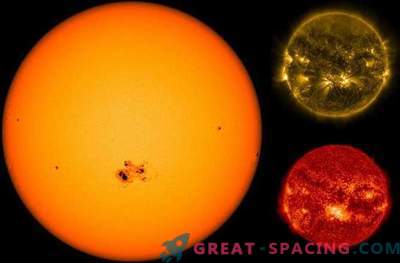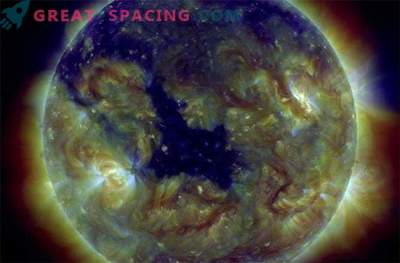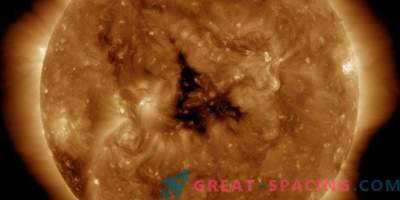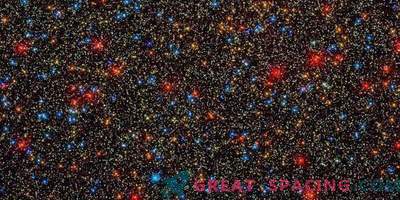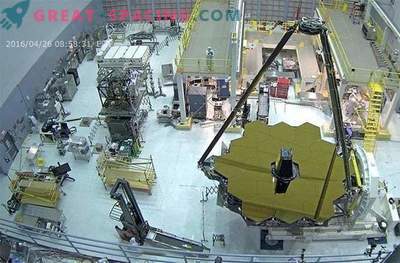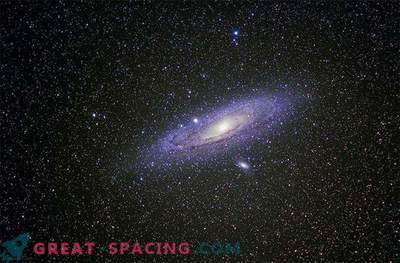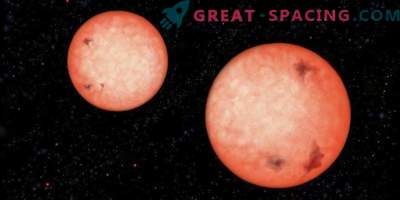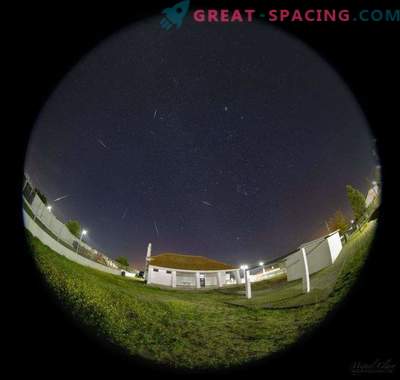
View of sunspot in visible and extreme UV light. Here are shown the bright spirals stretching over the active zone.
June 5, NASA began to observe the active region rotating in the sun. The satellite continued surveillance, noting growth, until July 17 the spot made a turn and went out of sight.
The active area was called AR12665. It took her 13 days to complete the observed route. Such spots are common on the Sun, because the star moves to a period of lower activity (solar minimum). This is part of the standard 11-year cycle.
Researchers carefully note such points, because with their help one can understand the internal mechanism of stellar functioning.
On July 9, a medium flash appeared from the spot. These are explosions on a star, sending energy and high-speed particles into space. She was qualified as type M1. On July 14, the second medium flash of type M2 appeared. It lasted longer and entrenched for 2 hours. At this point, a coronal mass ejection also occurred when the speed dropped from 620 to 466 miles per second.
On July 5, 2017, the Solar Dynamics Observatory observed the active territory making a turn. The trip took 13 days, during which noted several outbreaks and the release of the coronal mass.
This observation will help create more accurate predictions of solar storms and other star activities. On July 16, the coronal ejection reached our planet and came into contact with the magnetic field. The trip to the solar storm took 2 days, which led to shine.
